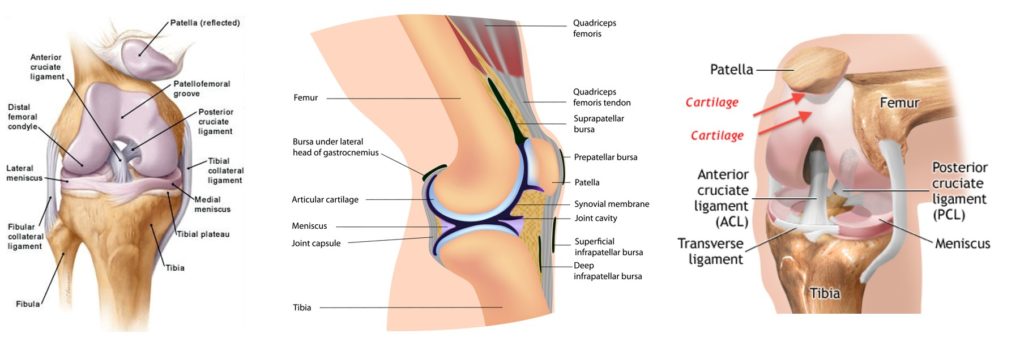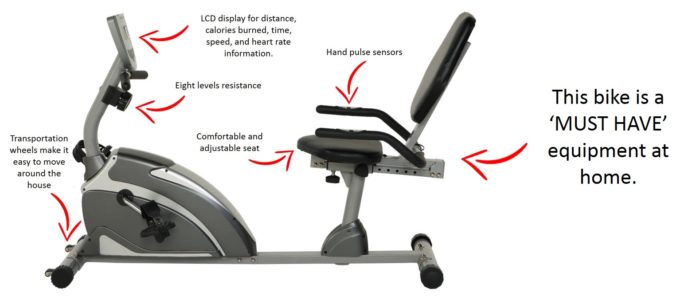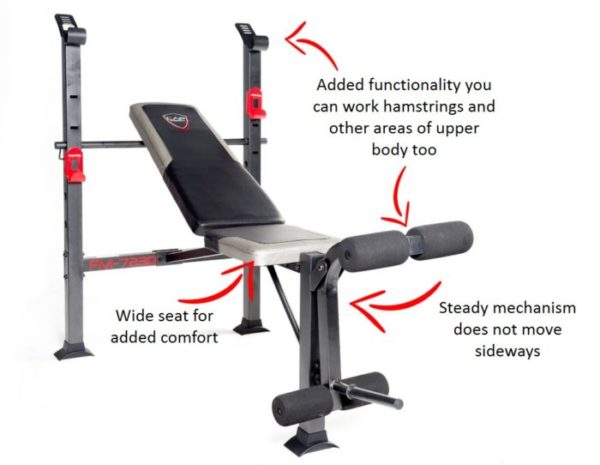
19 Feb How To Reduce Knee Pain On Aging Joints: Try This
45 years old, 6 knee surgeries (including 3 ACL and 3 meniscus), severe arthritis, and still going. This is my story.
My name is Ray, and the above intro would point only to one direction: no more physical activity, ever! At this point, a knee with no meniscus and 3 times the same ACL repaired (all surgeries in the same left knee) would turn anyone down. The odds are against me, right? Well, I decided not to give up.
If aging, arthritis, a poorly recovered knee from surgery, or any other cause is making you continually suffer from knee pain, let me tell you, there are ways to fight it.
We need to understand though, that managing knee pain needs to be a disciplined and structured process. Suffering knee pain can limit you not only from physical activity, but also daily functioning. In some cases, if not dealt with appropriately, this condition can lead to other stages such as depression. What a better thing to know that you can enjoy a run, or a jog, or your daily functioning with less pain, or no pain at all? Well, take note.
**Everything in this post is not directed and should not be taken as medical advice, and everything you do or don’t do, is at your own discretion and risk.
The knee is one of the largest and most complex joints in your body, connecting the thigh bone (femur) to the shin bone (tibia). Tendons and ligaments of the knee connect these bones. Your most important ligaments are:
- Anterior Cruciate Ligament ACL prevents the tibia from sliding forward on the femur
- Posterior Cruciate Ligament PCL prevents the tibia from sliding backward on the femur
- Medial and Lateral Collateral Ligament prevent the femur from sliding side to side

Some of the most common conditions of the knee are:
- Chondromalacia patella. When the cartilage behind the patella is irritated causing pain
- Knee Osteoarthritis. Caused by wear and tear of cartilage due to aging. This brings pain and swelling
- Meniscal tear. Damage in the meniscus usually caused by twisting the knee. Sometimes the damage will cause a lock sensation of the knee. Surgery will be recommended by your Doctor.
- ACL tear. Surgery will be recommended by your Doctor.
- PCL tear. Less common than ACL Tear, sometimes surgery is not needed.
- Patellar subluxation. When the kneecap slides abnormally along the thigh bone
- Patellar tendonitis. Inflammation resulting from continuous stress of the patella tendon
- Rheumatoid Arthritis. An autoimmune condition causing arthritis in joints. This condition causes permanent joint damage if left untreated.
For conditions such as ACL and meniscus tear, as mentioned above, a surgical procedure will be most likely recommended by your Doctor as they need mechanical correction. For the rest, other non-surgical options can help, as I discuss in this post.
First off, let me start by saying that when it comes to dealing with knee pain from a chronic or severer condition, there is no magic one size fits all solution, this means, my routine is a combination of things pointing to tackle 3 main areas:
- Pain and swelling management
- Strengthening and conditioning
- Supplements
Although I use various options for each of the three areas, the important thing is to at least do one of each. I read so many ads with ‘magic supplements’ for example, believe me, managing knee pain is a wider context that involves the three areas above for long term and effective results. The three areas above provide the combination that works for me in dealing with my knee pain that allow me to perform daily activities and physical activities with very low levels of discomfort. Again, the three areas are my key in order to see sustainable and effective results.
Part 1
Pain and swelling management
When cartilage is damaged, or conditions such as arthritis are present, the knee will naturally tend to trigger constant pain and swelling. I manage the inflammation part via natural ingredients such as Turmeric, Bromelain, Ginger. Please avoid NSAIDs. There non- steroidal anti-inflammatory drugs such as Advil, Motrin, Aleve, etc will provide short term relief but long-term side effects such as gastrointestinal issues and high blood pressure, among others. I don’t take them. My routine includes a daily take of this Turmeric & Bromelain by Natural Factors
Both Turmeric (family of Ginger) and Bromelain (from the pineapple) have potent anti-inflammatory and anti-oxidant properties. And these are natural ingredients. So I take them daily (sometimes I skip one day or two every two weeks but back to normal after then) without any issue.
In addition to Turmeric and Bromelain, I will do compression, warm tub (with Epson salt), and Pain Relief Crème.
Compression helps keep swelling in check. I don’t use knee braces, why? I was told once by a Doctor that they don’t do your vastus medialis a favor (this is the ‘tear muscle’ on top of the patella) since they can cause muscle atrophy if brace is used excessively. I believe this is true. And believe me, you don’t want your vastus medialis not working properly; this muscle is key in your knee functioning. I use (almost daily) these SKINS full compression leggings. Besides giving you a very firm compression, full leg compression also helps you improve venous circulation and prevent and treat venous problems. Believe me, they work.
There are plenty of brands and products when it comes to full leg compression, but these are the ones I use, and the ones I recommend. Their compression is firm ad high quality.
Check Skins DNAmic compression here
Pain Relief Crème. I apply almost every night a gentle amount of Penetrex. They help in providing a good amount of pain relief and anti-inflammatory too, so I let it work at night. I have used other products (Blue Emu, Biofreeze, Arnicare), but I will stay with Penetrex. I can recommend this one as the top of its class.
Check Penetrex here
Warm tub. This is super beneficial as it relaxes nerves and tendons when you are feeling the knee a little too stiff. You can feel the effects the next morning as your knee will feel more relaxed and you can even see its effects on inflammation. I do these baths around once a week. Just go to the tub and fill it with warm to hot water (around 1 feet of water), lay down, pour half bag of Dr Teals Epsom Salt and relax for about 30 minutes. I pour a good amount (half bag) to make sure I get enough of it. You will feel the difference.
Check Dr Teals Epsom Salt here
Part 2
Strengthening and conditioning
The second pillar of the process involves keeping those muscles toned and strong in order to support your well-functioning of the knee. The focus should be on quads, hamstring, and glutes. However, a damaged knee can only withstand certain exercises that don’t cause too much stress on the joint.
The exercise to start with is static bicycle. I use this Exerpeutic Recumbent Bike at home. You don’t need more than this. This is a low priced and good quality product (there are models up to $2000). Again, don’t aim to spending more than $200 on a recumbent bicycle. You can do some 10 minutes to warm up if you are going to do additional leg exercises. Or 15-20 minutes if you are only doing the bike for the day.
Check the Exerpeutic Recumbent Bike here

Swimming is also a low impact exercise that you need to do. Only in case you have access to a pool.
Leg extensions. This is an isolated exercise targeting the quadriceps specifically, but I do this exercise in short angle and avoiding full extension. This means, I don’t get my ankles to the full back when going down, and I don’t reach full extension when going up. Just keep a short range of 25-30 degrees in your movement up and down, and slow. Don’t stress your knee. The short degree will make your vastus medialis work more, which is a muscle that supports the alignment of your knee cap. Remember, short angle, slow, and don’t reach full extension. You can do 4 sets of 15 reps each, after a bicycle warm up. I use the CAP standard bench with leg extension. This is a low-price equipment perfect for this exercise. You don’t need more than this. Do not expect a top of the line equipment, remember, you are paying a low price for a specific objective. This machine works perfect for me. Easy to assemble and supports my leg extension routine perfectly, besides its super affordable price.
Check the CAP Basic Barbell here

Static squats. Squats are not recommended on a damaged knee. There is too much stress put in the knee, BUT, static squats can work. This exercise is done by placing your back against a wall on a ‘sitting’ position and staying static for 15-20 seconds each time. You will feel that quad working, and you are not moving the knee. Your hamstring and glutes will also work (also key for your overall support to the knee). You can do this one after activating your vastus medialis on the leg extension.
Bicycle + Leg Extension + Static Squad form the base of my strengthening routine. I don’t do more than this.
Part 3
Supplements
Although there seems to be wide debate as to the effectiveness of supplements, I take them, and I can feel the difference. This is based on my experience. My routine is based on intake of Glucosamine-Chondroitin plus Collagen. All three of these substances are produced naturally by our body and providing it with a higher concentration can aid health cartilage. Glucosamine can also reduce collagen breakdown. Collagen is a protein made up of amino-acids that help our body’s connective tissue. When you take hydrolyzed collagen, you get a boost of the specific amino acids rich in collagen. These products are safe to take, so why don’t give them a try?
My preferred supplements are Osteo Bi-Flex Triple Strength and Multi Collagen
Read more about Glucosamine and Collagen supplements
Disclaimer: Ray is author and blogger of Atletikka.com. All comments and products recommended above are based on his own experience. All products are tested and used, and we give observations based on real and tangible results. We will never claim the quality of a product without being put to real test. (yes, this is Ray in the pics below!)
We’d love to hear from you. Drop us a note in case this post was helpful to you.

Sorry, the comment form is closed at this time.